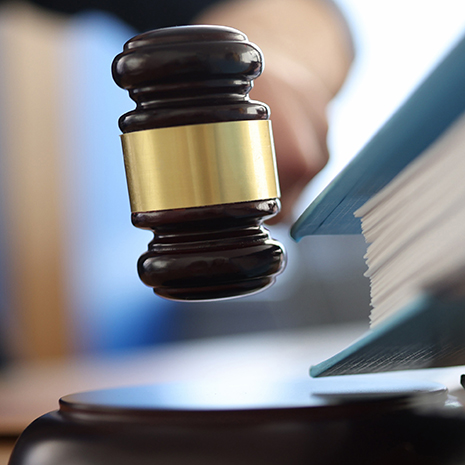Leading Federal Appeal Attorneys: Your Partners in Navigating the Appeals Process
Demystifying the Process of Federal Appeals: What You Need to Know
Navigating the intricate realm of government appeals can frequently feel like passing through undiscovered waters for those unfamiliar with the process. Comprehending the nuances of appellate court jurisdiction, the complexities of submitting a notice of appeal, presenting an engaging brief, and making an influential oral disagreement are crucial components that can significantly impact the result of an instance. By untangling the layers of intricacy bordering government appeals, people can obtain a clearer understanding right into the systems that control this critical point of the legal system.
Comprehending Federal Appeals Process
Exploring the detailed world of the federal appeals process unveils a methodical and organized trip with the judicial system - federal appeals lawyers in Idhao. Federal allures function as a crucial system for reviewing choices made by reduced courts. Comprehending this procedure is crucial for any person entailed in legal procedures at the federal level
The process generally starts with a celebration disappointed with a reduced court's judgment submitting a notification of charm. This causes an evaluation by a greater court, where a panel of courts assesses the legal debates presented by both parties. Briefs outlining the lawful thinking behind each celebration's position are submitted, and dental arguments might be heard to clarify complicated problems.
The appellate court's decision is based upon an extensive assessment of the reduced court's proceedings and the debates presented. The courts do not focus but review facts on whether lawful errors occurred that influenced the lower court's decision. When the appellate court reaches a decision, it can verify, turn around, remand, or customize the reduced court's judgment, giving quality and finality to the lawful conflict. Comprehending this procedure is essential for navigating the complexities of federal charms properly.
Appellate Court Jurisdiction Discussed

Appellate courts have territory over certain types of cases, usually those including lawful mistakes, procedural problems, or inquiries of legislation as opposed to accurate conflicts. The jurisdiction of appellate courts is typically outlined in laws and regulations that regulate the court system. Recognizing appellate court territory is essential for parties associated with the charms procedure as it figures out whether a situation is qualified for testimonial and the level to which the appellate court can intervene in the reduced court's choice.
Filing a Notice of Allure
The preliminary action in starting the government appeals procedure includes filing a Notice of Allure with the proper appellate court. federal rico appeal lawyers. This important document formally notifies the court and the various other celebrations associated with the instance that the appealing event plans to seek a review of the lower court's choice. Filing a Notification of Allure is a strict procedural requirement that establishes the appellate procedure moving
When preparing the Notification of Allure, it is vital to ensure conformity with the particular regulations and standards of the relevant appellate court. The record must commonly include details such as the situation name, the lower court's name, the date of the judgment being appealed, and a concise statement suggesting the grounds for the appeal.
When submitting a Notification of Allure,Timeliness is of the significance. Missing out on the target date for submitting this file can cause the charm being dismissed, highlighting the relevance of timely and exact initiation of the charms process. It is advisable to look for lawful support to browse the complexities of filing a Notice of Charm properly.
Instruction and Dental Disagreement
In the appellate procedure, presenting written briefs and taking part in dental disagreements play crucial roles in supporting for the appealing party's setting prior to the appellate court. Briefs are detailed lawful documents that detail the parties' arguments, legal authorities, and evaluation supporting their settings. These composed submissions supply the court with a detailed understanding of the truths of the case, the appropriate regulation, and why the appealing event thinks the lower court's choice ought to be rescinded.
Complying with the entry and review of the briefs, oral disagreements provide the celebrations a possibility to additional clarify their positions, address any kind of inquiries the appellate courts may have, and emphasize bottom lines from their composed briefs. Oral arguments are a possibility for the attorneys to encourage the courts through spoken advocacy and actions to queries from the bench.

Receiving the Appellate Court Choice

Final Thought
Understanding the appellate court jurisdiction, submitting a notification of appeal, preparing briefs, and offering oral disagreements are all vital parts of this process. Eventually, receiving the appellate court choice can give quality and resolution to legal disagreements.
As we progress from recognizing the government appeals process to dissecting the ins and outs of appellate court jurisdiction, a fundamental aspect comes to light relating to the authority and limitations of these greater courts in the legal landscape. Appellate court jurisdiction refers to the extent of cases that a particular appellate court has the power to decide and evaluate upon. directory Unlike trial courts that listen to cases for the very first time, appellate courts are restricted to evaluating choices made by lower courts. Comprehending appellate court jurisdiction is critical for parties entailed in the allures procedure as it figures out whether a situation is qualified for testimonial and the degree to which the appellate court can intervene in the lower court's choice.
Whether the appellate court affirms, reverses, or remands the reduced court's decision, recognizing the implications of the ruling is important for all parties included in the appellate process.